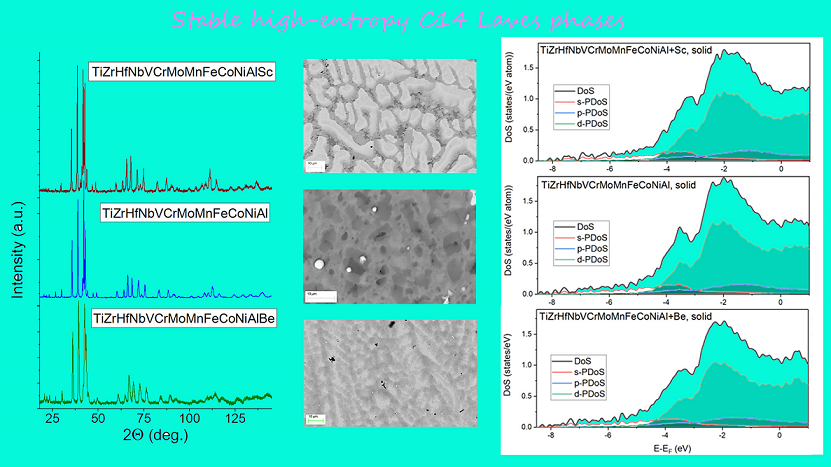One of the intriguing recent results in the field of high-entropy alloys is the discovery of single-phase equiatomic multi-component Laves intermetallics. However, there is no clear understanding that a combination of chemical elements will form such high-entropy compounds. Here we contribute to understanding this issue by modifying the composition of duodenary TiZrHfNbVCrMoMnFeCoNiAl (12x) alloy in which we recently reported the fabrication of hexagonal C14 Laves phase. We consider three alloys based on 12x: 7x=12x-VCrMoMnFe, 12x+Sc, 12x+Be and observe that all of them crystalize with the formation of C14 Laves phase as a dominant structure. We report that 12x+Be alloy reveals single-phase C14 structure with very high concentration of structural defects and ultra-fine dendritic microstructure with almost homogenous distribution of the constituted elements over the alloy matrix. The 7x and 12x+Sc alloys contain C14 as a main phase and unknown impurity phases. To characterize the materials, we examine their heat capacity, electrical conductivity and magnetic properties. The measurements reveal that the Laves phases are Curie-Weiss paramagnets, which demonstrate metallic conduction; 7x and 12x alloys also reveal a pronounced Kondo-like anomaly. Analysis of experimental data as well as ab initio calculations suggests that chemical complexity and compositional disorder cause strong s-d band scattering and thus the rather high density of d-states in the conduction band. Analysis of the results suggests that the mechanism of Laves phase formation in multicomponent multi-principal element metallic alloys is may be the same as in polydisperse hardspheres mixtures. Another important conclusion is that the configurational entropy is a negligible factor in the stabilization of multi-element Laves phases.

